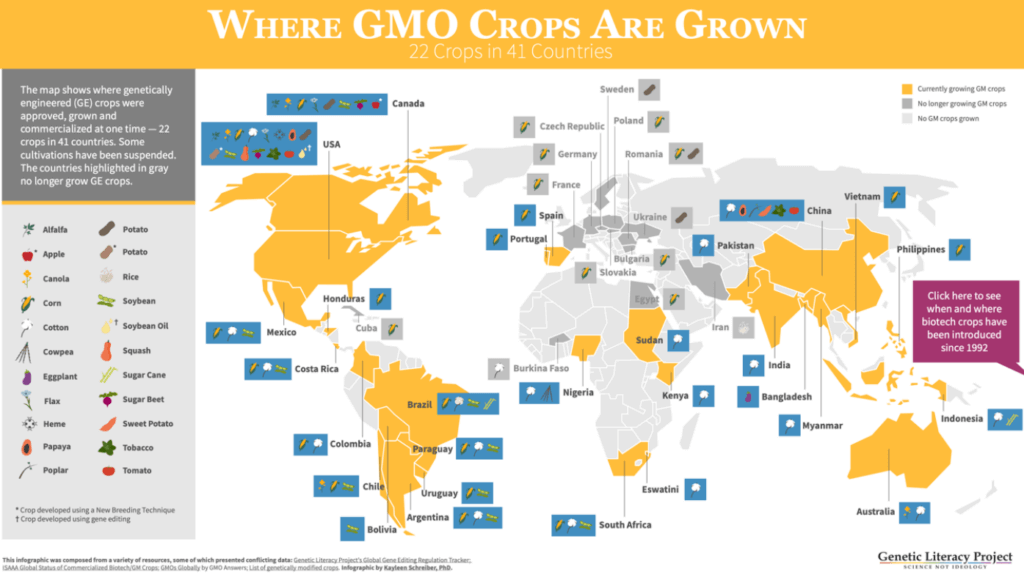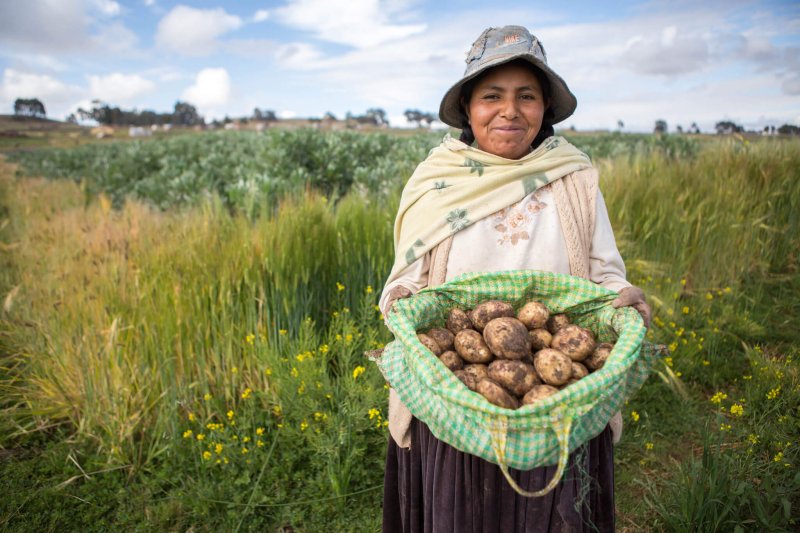Small actions can create such huge differences. We see that ‘butterfly effect’ playing out in Latin America. where the development of a new generation of crops using CRISPR and other new breeding techniques (NBTs) is now unfolding… and what’s smaller than a gene?
Changes in a single gene are revolutionizing science, making a big impact on medicine and agriculture: think COVID vaccines or genes that increase yield or climate resilience or nutritional value of crops. In the food sector, gene-edited tomatoes, wheat and other foods are already being consumed and commercialized, and dozens more are on the way.
The main challenge going forward in the agriculture sector, particularly in Latin America, is how NBTs will be regulated. As GMOs in which genes are moved between species to introduce specific traits? Transgenic techniques are heavily regulated in most jurisdictions because of the presence of so-called ‘foreign genes’.
Many of the innovation-blocking regulations were composed in the early 2000s when much less was known about genes, and fear and misunderstanding drove public opinion against the science, and politicians followed suit.
Scientists believe the obsession of distinguishing between what is ‘natural’ and what is a ‘foreign’ gene is scientifically silly, as even in nature genes flow from one species to another. This dubious notion has long throttled the biotech ag revolution.
If this is the regulatory model going forward, the CRISPR ag revolution will stall. Gene editing—which is known as cisgenics—can introduce many new traits but is not a substitute in many cases for transgenics—does not involve moving genes among species.
The European Union vs. the world
The EU, at least for now, seems intent on sticking to the backward GMO regulations it adopted in 2001 and 2003 in the wake of food scares unrelated to biotechnology. The United States, Canada, China, Japan, and even the United Kingdom are shedding decade-old superstitions and taking steps to greenlight gene editing.
Latin American nations are also taking global leadership in the research and development of gene-edited crops. Argentina, Brazil, and other South American countries are being proactive, creating regulatory frameworks that will make these novel crops accessible to farmers and consumers in just a few years’ time. They will be evaluated as conventional crops, making the research and development process needed for environmental release and testing affordable to developers — something that does not happen with transgenic GMOs in which only big companies can afford to run the expensive, time-consuming regulatory gauntlet.

The relatively minuscule costs necessary to bring new products to the evaluation stage could help unleash an entrepreneurial revolution in the food sector, ironically undercutting the influence of multinational agribusinesses. This regulatory revolution could reshape the public’s perception of genetically modified crops and knee-cap aggressive anti-biotech activist groups that have spent decades spreading alarmist, unfounded fears that multinational corporations are out to ‘control the global food supply.
Latin America as gene editing innovation hub
In Latin America, agricultural biotechnology public research centers are popping up, allocating resources to develop novel crop varieties. New and small companies are being founded and funded. Together they are revolutionizing the future of food production in Latin America, with crops and foods being developed from a farmer’s and consumer’s perspective and by creating novel crop varieties with regional interest.
In Argentina, BioHeuris, an expert in weed management, is leading the synthetic biology revolution, working with CRISPR tools to develop next-generation herbicide-resistant soybean, sorghum, alfalfa, rice, and cotton. Created in 2016, BioHeuris accelerates plant breeding to evolve crops faster than weeds. Together with integrated pest management techniques, they expect to develop a sustainable system for numerous crops with varieties available for commercialization by 2026 or 2027.

“With our platforms fully operational, time to market will be reduced by half and development costs cut 100 times compared to current GMO crops developed by the big seed companies,” said co-founder and Director of Strategy Carlos Perez.
CONABIA, Argentina’s biosafety commission, has already ruled that these gene-edited plants should not be regulated as GMOs. In January, APHIS in the United States and Brazil’s CTNBio (National Technical Biosafety Commission) also gave the green light for the introduction of BioHeuris’ CRISPR solution.
In Brazil, the government-funded company Embrapa is emerging as an innovation leader in exploiting. It developed the first gene-edited sugarcane in the world. It has two varieties: one offers higher cell wall digestibility and a higher concentration of sucrose in plant tissues. CTNBio has determined that neither variety will be regulated as a transgenic GMO.

According to the deputy head of Research and Development at Embrapa, the development of new cultivars through CRISPR is at the frontier of knowledge.
These cultivars are only the beginning, and they pave the way for the development and delivery of other cultivars for the production sector with characteristics that will directly impact the productivity and reduce production costs.
Colombia is following a different path. CIAT (International Center for Tropical Agriculture), a public research center, has been identified as a pioneer in genome editing in Colombia and is leading the national research and development of gene-edited crops. CIAT’s researchers have worked on several crops including cassava, rice, and beans. The modified rice variety is resistant to the hoja blanca virus, a disease that bleaches the leaves off and eventually kills rice plants. It is prevalent in Latin America. CIAT’s team is also exploring the use of genome editing to make it easier for people to digest beans.
Chile’s research team is based in the Department of Biology of Science’s Faculty at the University of Chile. It is working on creating gene-edited crops, focusing on tomatoes and kiwi that can tolerate drought and soil salinity. In addition, they are using CRISPR to modify apples to increase their nutritional profile, adding a higher content of carotenoids, and resisting the oxidation that causes browning after they are cut.
In addition to the efforts made by the University of Chile, NeoCrop, an emerging company, is joining them in the domestic research landscape of gene-edited crops. They are developing gene-edited wheat that produces higher levels of fiber and is resistant to drought and extreme heat. NeoCrop expects to have this new gene-edited wheat variety ready for field trials this year or next.
This emerging dynamic offers a preview of the future in which small and entrepreneurial start-ups will lead in the research and development of novel crops with a focus on farmers and consumers. Increasingly, NGO criticism that crop biotechnology in Latin America is being driven by monopolistic corporations is obsolete and misguided.
Luis Ventura is a trained biologist and biosafety expert. Luis is a member of Mexican Scientist Allies for Knowledge in Agriculture and a 2016 Alliance for Science Global Leadership Fellow and trainer. View Luis’ LinkedIn page here. Find Luis on Twitter @Iuisventura































